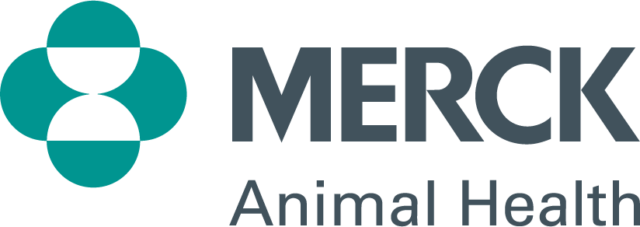Recent research from the University of California – Davis offers further indication oral calcium supplementation may support increased milk production in addition to supplying the extra calcium needed to ward off subclinical hypocalcemia.
For this research, data was collected from two large commercial herds in California, and preliminary results were presented as a poster at the 2018 American Association of Bovine Practitioners conference.
This is just the latest in recent research indicating the benefits of oral calcium supplements. Oral calcium supplements are primarily thought of as a post-calving means of preventing subclinical hypocalcemia, which often goes undiagnosed due to lack of observable symptoms.
It was determined by researchers hypocalcemia affects about two-thirds of U.S. dairy cows second-lactation and older. This statistic is worth paying attention to because the negative effects of subclinical hypocalcemia can include compromised immune function, decreased feed intake and rumination, detrimental impact on future milk production and reproductive performance, and a greater likelihood of ketosis, retained placenta, mastitis and displaced abomasum.
Calving and lactation quickly demand two to three times the amount of calcium required by a cow prior to calving. Calcium is mobilized from within the cow’s body to meet this demand. Some decrease in blood calcium levels is normal at calving, but if calcium levels drop too much health and productivity may be compromised.
Research in the 1990s set the standard for oral calcium supplements by determining a minimum of 50 grams of oral calcium post-calving is needed to adequately raise blood calcium levels.
The UC – Davis trial utilized oral calcium boluses providing greater than 50 grams of calcium (QuadriCal Mini) to shed light not only on the effectiveness of the boluses but also on post-calving oral calcium supplement protocols. The newest data suggests oral calcium supplements may also hold significant milk production benefits for some groups of cows within the herd.
This most recent research from UC – Davis featured a large sample size (1,175 Jersey and Jersey/Holstein crossbreed cows from two herds). Dry cows from both herds were offered a TMR with anionic salts once a day. The preliminary results indicate milk yield increased by 1.98 pounds per day across all cows over three post-calving milk tests.
Certain groups of cows were more responsive to oral calcium supplementation than others. For instance, cows with a previous lactation of more than 338 days and lame cows had significant milk production increases of 4.19 and 3.75 pounds per day, respectively.
Another study from UC – Davis (published in the Journal of Dairy Science in May 2018) found Jersey cows already consuming anionic salts pre-calving and supplemented with the same aforementioned oral calcium boluses post-calving had improved serum (blood) calcium concentrations after calving compared to cows only consuming anionic salts.
The results showed blood calcium concentrations improved significantly (8.65 milligrams per deciliter blood calcium versus 8.01 milligrams per deciliter for control animals) by the first test point, one hour after the oral boluses were given.
The number of anionic salt-consuming control cows with subclinical hypocalcemia (less than 8.5 milligrams per deciliter) remained about the same during the 24 hours after calving, while the number of cows consuming anionic salts and receiving oral calcium boluses that had subclinical hypocalcemia was reduced by about 30 percent.
Researchers concluded “postpartum oral supplementation with two doses of 50 to 60 grams of calcium increased serum calcium concentration and reduced the prevalence of subclinical hypocalcemia.”
These results also suggest supplementing cows with oral calcium post-calving holds benefits for preventing subclinical hypocalcemia even when cows also receive anionic salts in the pre-fresh diet. A similar conclusion was shown for another trial recently published in Research in Veterinary Science.
There are two schools of thought when it comes to post-calving oral calcium protocols. One is to target groups of cows for calcium administration, and the other is to administer calcium to every fresh cow. If 50 percent of all dairy cows develop hypocalcemia around calving time, though, that means giving every cow an oral calcium supplement is wasted on half the herd. Right? Not quite.
Since cows with subclinical hypocalcemia exhibit no symptoms, and since there is currently no validated economical cowside blood calcium test available, there is also no good way to know which cows need extra calcium at calving.
Research conducted by Dairy Health and Management Services LLC and Cornell University in New York (published in the Journal of Dairy Science in April 2018) offers an idea of which groups of cows benefit the most from oral calcium at calving, but it’s not a simple picture.
Furthermore, identifying and targeting these cows (older heifers, high body condition score heifers, lame cows, cows with long days carrying calf and cows entering their third or greater lactation) may cost as much in labor as implementing a blanket post-calving protocol.
The data from the DHMS/Cornell study also seems to support the economic wisdom of giving every fresh cow an oral calcium supplement after calving, especially second-lactation-and-older cows. Why? Incidences of common fresh cow disorders (displaced abomasum, metritis in low-calcium-status cows, and retained placenta) were reduced after oral calcium bolus administration, saving money that would have been spent on treatment.
Furthermore, certain groups of cows (cows with a gestation length of more than 277 days and first-lactation cows with a body condition score of more than 3.5) produced significantly more pounds of milk per day after oral calcium supplementation.
Calculations based on the data from the DHMS/Cornell trial indicated the economic benefit of giving every cow an oral calcium supplement amounts to about $44 (including estimates for supplement and feed costs) per cow over the first four milk test dates and likely even more over a 305-day lactation cycle.
Implementing a blanket oral calcium supplement protocol is an investment, and the data from the published UC – Davis and DHMS/Cornell trials indicate it’s an investment with a statistically good chance of a return for both health and productivity. If you have the ability to easily identify sub-populations of cows, you can increase the return on oral calcium supplementation.
If not, an “every cow, every calving” approach showed a greater than $40 return on investment per cow and was very consistent between both of these trials involving production effects. That is an excellent return on your investment in time and materials to implement an oral calcium supplement program, even if anionic salts are already being used. ![]()
William Zimmer is a veterinarian and president of Bio-Vet Inc., based out of Blue Mounds, Wisconsin.
References omitted but are available upon request. Click here to email an editor.






